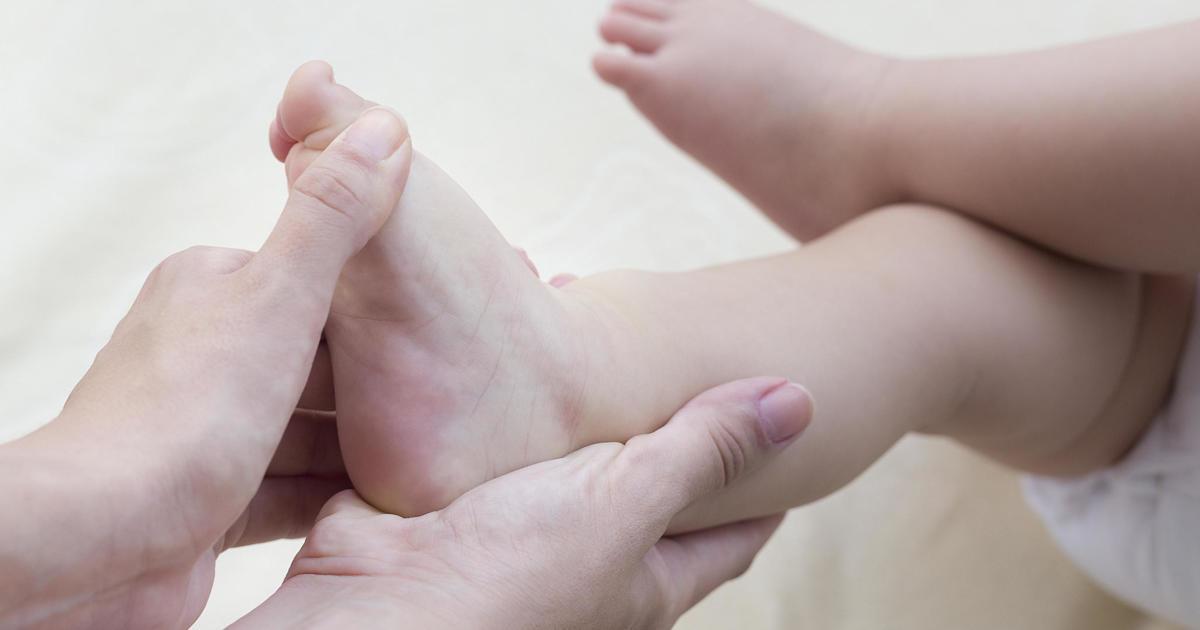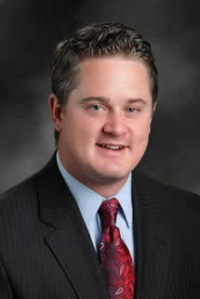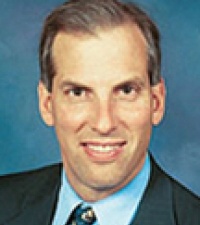
Dr. Daniel W Hanson MD
Orthopedist | Orthopaedic Surgery of the Spine
2780 SNELLING AVE N 310 ROSEVILLE MN, 55113About
Dr. Daniel Hanson is an orthopaedic spine surgeon practicing in ROSEVILLE, MN. Dr. Hanson specializes in the diagnosis, treatment and rehabilitation of injuries, diseases and disorders of the bodys musculoskeletal system. As an orthopaedic spine surgeon, Dr. Hanson tends to bones, ligaments, muscles, joints, nerves and tendons of the cervical, thoracic and lumbar spine.
Provider Details

Dr. Daniel W Hanson MD's Expert Contributions
How do you manage a discectomy at home?
Hello, I am an orthopedic spine surgeon in Minnesota that specializes in endoscopic spine surgery to treat disc herniations. I have personally had 3 disk herniations and surgery to treat one of them. Fortunately, non surgical management should result in a 80-90 percent resolution in symptoms without surgery. That said, dealing with pain and neurologic symptoms can be very persuasive to get some help. Here is what I’d suggest: 1. Start with short-term use of over the counter medications that you tolerate such as acetaminophen and ibuprofen. It is generally okay to combine the two medications unless you have a medical condition preventing the use of these medications. Make sure to use less than 4000mg per day of acetaminophen. 2. Look online for exercises to treat a lumbar or cervical disk herniation. (We have some of these on my website) 3. Consider a telemedicine or primary care visit. These are generally a great first step in initiating treatment and provides the opportunity of obtaining prescription medication and documenting the onset of treatment for your insurance company. Make sure the provider recommends several things including the use of #1. and provides a home exercise plan. This is very important to help you and meet some insurance requirements to obtain an MRI scan. We provide these through my clinic and have been a great way to help people especially during the Covid-19 pandemic. 4. Consider starting oral steroids such as a medrol dose pack. This isn’t such a good idea if you are an insulin dependent diabetic, but for other people, this medication might significantly reduce your pain. This requires a prescription and can be had during #3. 5. A referral to physical therapy or a chiropractor. 6. Depending on the severity of symptoms and whether you’ve already completed #1-5 an MRI scan might be needed. 7. An epidural steroid injection has been shown to be effective in up to 70% of people to avoid surgery. 8. Surgery. This might involve some research on your part to identify how you want the surgery performed. A. I am partial to an endoscopic microdiscectomy because it is the least invasive method to remove the disc herniation. It can be performed through the foramen along the side of the spine or from the back (posterior) side. Typically, the surgery is done with a 7mm diameter tube. This means there is less injury to the muscle and a small incision (8mm) is used to perform the surgery. Theoretically, minimal scar tissue is formed around the nerves after this type of surgery. If a transforaminal approach is used then this avoids the type of injury to the multifidus muscles that occurs during an MIS or open approach. B. “MIS” or minimally invasive microdiscectomy. This is done through a posterior approach and is performed through an 18 or 22mm tube. Between the lamina or Interlaminar window and the bottom of the access tube, some muscle and bone are usually removed to access the disc herniation. Bone removal refers to a laminotomy or hemilaminectomy that is usually performed. Generally, this requires a longer period of time to heal the muscles and skin. The incision is usually between 20-30mm. Scar tissue typically forms along the nerves after this type of surgery. C. Open microdiscectomy. This is done through a posterior approach and involves cutting the muscle off the spine and placing a retractor so that the interlaminar window and lamina is seen. A laminotomy or hemilaminectomy with removal of bone is usually performed except at L5-S1. This may take the muscles and skin the longest to heal depending on the incision size and retractor used. Scar tissue typically forms along the nerves after this type of surgery. The incision size can vary. I’ve seen 25mm (1 inch) to 152mm (6 inch) incisions to treat one level disc herniations. In conclusion: If the symptoms are bad enough, don’t wait 3 months to be in the 90% group that get better with conservative treatment. Steps 1-8 can be done to get better so you can have relief from the pain. If constant numbness, weakness, and severe pain are present then get evaluated urgently. If loss of bowel or bladder control occurs or significant weakness develops then this becomes an emergency and needs evaluation immediately. Hope this information is helpful, Daniel W. Hanson, MD READ MORE
What is the success rate of a laminectomy?
The rate of success is 98 percent. This is fairly well documented in studies regarding the treatment of spinal stenosis for neurogenic cladication. That term refers to the symptoms a person can get with butt and leg pain because of a tight spinal canal. Dan Hanson READ MORE
Why does my lower back ache constantly?
I recently wrote an article about this topic. It can be found using this link: https://minnesotaspineinstitute.com/conditions/back-neck-pain-types-treatments-solutions/ In your situation, the most likely cause is weakened core muscles. The core muscles support your spine and pelvis. Too much sitting, especially in the workplace, can lead to low back pain. Focusing on core exercises or getting a sit stand desk can help. Here’s a link to core exercises: https://minnesotaspineinstitute.com/wp-content/pdf/Hanson-Core-Excercises.pdf I’ve done these exercises when my core is weak and they really can help relieve your back pain. If the exercises don’t help, then there may be another cause of your back pain, so see your primary care doctor and start working up the other causes of your back pain. READ MORE
Can laser treatment help spinal stenosis?
Hello and thanks for the question. It is a very good question. The confusion exists between the tool and the technique. The tool is the laser. The technique is where all the important stuff happens and that is endoscopic spine surgery. A laser is mainly used to thin or remove soft tissue. Sometimes it can be used to remove bone but isn’t as effective at using it for this purpose. The laser can be used during endoscopic spine surgery but is not commonly used during other traditional or minimally invasive spine surgery procedures. Endoscopic spine surgery is a technique that could be considered the next step in the level of skill required to perform the most minimally invasive or as some people call it “ultra” minimally invasive spine surgery. The reason it appeals to many patient is that the postoperative period is usually completely different than traditional or minimally invasive spine surgery. The comparison of traditional, minimally invasive, and endoscopic spine surgery is explained as follows: Traditional spine surgery generally requires bigger incisions, longer healing times, more blood loss, more narcotic use and a longer period of time needed to treat the postoperative pain up to 3-6 months depending on the type of surgery. Scar tissue around the nerve tissue can be quite significant. The muscle fascia is usually cut significantly which requires approximately 6 weeks to heal. Minimally invasive surgery generally has smaller incisions, shorter healing times, less blood loss than traditional surgery, less narcotics and usually a shorter period of time needed for treating pain with narcotics. Some patients still require a prolonged period of narcotic use up to two to three months depending on the type of surgery. Scar tissue around the nerve tissue can be quite significant. The muscle fascia still requires approximately 6 weeks to heal. Endoscopic spine surgery is vastly different in the technique because now the surgeon is placing a tube typically smaller than 7mm with a small camera at the end in the location where the problem is in the spine. The tube has a “working channel” or small tube inside the 7mm tube through which different tools can be placed to treat the problem. These tools are generally much smaller versions of the tools used during traditional or minimally invasive styles of surgery. The tools include little drills, grabbing devices, various probes, and also a laser. Without the skills required to perform the endoscopic surgery the laser cannot generally be used effectively. The beauty of endoscopic surgery for the patient is that the postoperative pain is usually minimal and often eliminated. The size of the incision is less than a 10mm. In comparison the diameter of a dime is 17mm. The muscle damage is minimized as is the need to heal the muscle fascia. Bleeding and postoperative scar tissue around the nerve tissue is minimal. What this amounts to is a faster return to work and normal activities for most patients. It also means that those endoscopic patients don’t have the side effects of narcotics and can therefore drive and use machinery much sooner. So, the laser is just a tool. What you want to look for is an endoscopic spine surgeon who has the skills to treat you fathers problem. Given his age, he could have spinal stenosis, a disk herniation, or facet joint pain. These are all common conditions treated with endoscopic surgery. I hope this helps. Sincerely, Daniel W. Hanson READ MORE
Dr. Daniel W Hanson MD's Practice location
Minnesota Spine Institute
2780 SNELLING AVE N 310 -ROSEVILLE, MN 55113Get Direction
Dr. Daniel W Hanson MD's reviews
Write ReviewPatient Experience with Dr. Hanson
Recommended Articles
- Ehlers-Danlos Syndrome: Symptoms, Causes, Diagnosis, and Treatment
What is Ehlers-Danlos syndrome (EDS)?Ehlers-Danlos syndrome (EDS) is a group of genetic disorders that affect the body’s connective tissues, which are proteins that support the blood vessels, skin, bones, and other organs in the body. Connective tissues also provide elasticity and strength to the...
- What Is the Xiphoid Process?
Introduction The xiphoid process is the smallest part or structure of the breastbone. The structure is made of cartilage at birth, but tends to develop into a bony structure when an individual reaches adulthood. It is situated from where the lower ribs are attached to the breastbone. The pointed end...
- Are There Risks to a Spinal Stenosis Surgery?
Like any other surgical procedure, spinal stenosis surgery has its own risks and possible complications. However, if performed correctly by professional medical staff, the possibility of any complication after the surgery is low.The potential risks and possible complications following a spinal...
- What Is Spinal Decompression?
The human back is a complex structure of muscles, ligaments, bones, joints, and nerves. It is common for people to experience back problems at some point in their life for a variety of reasons. Since the pain can radiate into the back and even from other parts of the body, it is very difficult to...
- Broken Tibia: Symptoms and Treatment
OverviewThe tibia and fibula are the two bones in your lower leg. The larger bone is the tibia, which supports most of a person's weight. It is also an important part of the ankle and knee joints. A fractured or broken tibia is usually along the length of the bone and in between the knee and above...
- What Is Talipes Equinovarus and How Is It Treated?
IntroductionTalipes equinovarus (TEV) or commonly known as clubfoot, is a congenital foot and ankle deformity. Infants born with this deformity show a foot that is turned inward. In severe cases, the bottom of a newborn's foot faces upward or sideways. In spite of the deformity, clubfoot during...
Nearby Providers
- Dr. Joel Boyd M.D.8100 Northland Drive Bloomington Minnesota 55431
- Dr. Benjamin L. Clair DPM701 Park Ave South Minneapolis MN 55415
- Mr. David Templeman M.D.701 Park Ave Minneapolis MN 55415
- Dr. Jack Drogt MD1600 St. John's Boulevard Saint Paul MN 55109
- Dr. Glenn Robin Buttermann M.D.1950 Curve Crest Blvd W Stillwater MN 55082
- Dr. Edward W Szalapski M.D.7373 FRANCE AVE S EDINA MN 55435
Nearest Hospitals
GILLETTE CHILDRENS SPECIALTY HOSPITALl
200 UNIVERSITY AVENUE EAST SAINT PAUL MN 55106SHRINERS HOSPITALS FOR CHILDREN - TWIN CITIESl
2025 EAST RIVER PARKWAY MINNEAPOLIS MN 55414










